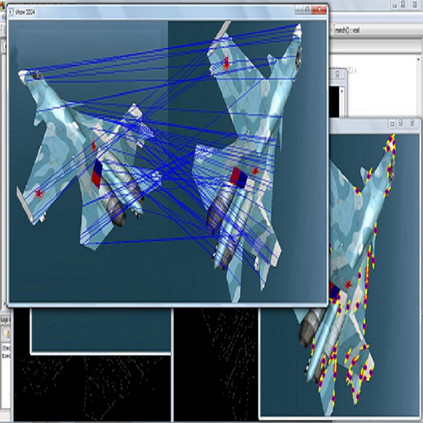Image registration is widely used in medical image analysis to provide spatial correspondences between two images. Recently learning-based methods utilizing convolutional neural networks (CNNs) have been proposed for solving image registration problems. The learning-based methods tend to be much faster than traditional optimization-based methods, but the accuracy improvements gained from the complex CNN-based methods are modest. Here we introduce a new deep-neural net-based image registration framework, named \textbf{MIRNF}, which represents the correspondence mapping with a continuous function implemented via Neural Fields. MIRNF outputs either a deformation vector or velocity vector given a 3D coordinate as input. To ensure the mapping is diffeomorphic, the velocity vector output from MIRNF is integrated using the Neural ODE solver to derive the correspondences between two images. Furthermore, we propose a hybrid coordinate sampler along with a cascaded architecture to achieve the high-similarity mapping performance and low-distortion deformation fields. We conduct experiments on two 3D MR brain scan datasets, showing that our proposed framework provides state-of-art registration performance while maintaining comparable optimization time.
翻译:在医学图像分析中广泛使用图像登记,以提供两种图像之间的空间通信。最近提出了利用进化神经网络(CNNs)的学习方法来解决图像登记问题。基于学习的方法往往比传统的优化方法快得多,但从复杂的CNN方法中获得的准确性改进并不大。我们在此推出一个新的深神经网基图像登记框架,名为\textbf{MIRNF},它代表着通过神经场执行的连续功能的对接映像。MIRNF输出的是一种变形矢量或速度矢量,以3D为坐标作为输入。为了确保绘图是二变形的,MIRNF的高速矢量输出是使用Neural ODE求解器集成的,以得出两种图像之间的对应。此外,我们提出一个混合式坐标取样器,连同一个级结构,以达到高度相似的绘图性能和低扭曲性畸形场。我们在两个3D MR 脑扫描数据集上进行实验,显示我们提议的框架在保持可比的优化时间的同时提供了状态的登记性表现。



